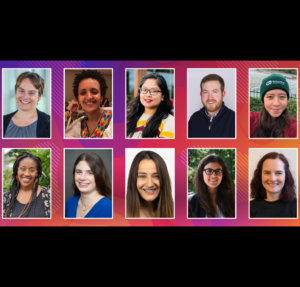A fisherman trying to catch rainbow trout (Oncorhynchus mykiss) needs the right tools: proper flies, a strong rod, and a little bit of know-how. A scientist trying to understand the genetic population structure of rainbow trout in the Fall River watershed of northern California also relies on a trusty toolkit – albeit a very different one.
This scientist might turn to massively parallel sequencing, but for most researchers, sequencing the full genome of a large group of individuals is prohibitively expensive. More economical techniques use only a subset of the genome for sequencing, performing sequence capture or reducing genomic complexity through restriction-site based techniques. However, each of these techniques still has drawbacks. Sequence capture library preparation is expensive and has low multiplexing capacity. Restriction-site associated DNA (RAD) sequencing is relatively fixed to the number and location of loci that can be sequenced.
In this month’s issue of GENETICS, Ali et al. describe a new method for analyzing large groups of individuals with a quick, cost-effective, and flexible technique; they demonstrate its effectiveness by exploring genetic diversity in rainbow trout. They introduce an improved protocol for generating RAD markers as well as a new genotyping method called Rapture (RAD capture). Their updated RAD protocol outperforms the older version by reducing the number of clonal sequencing reads produced, which leads to higher coverage per locus.
The authors designed RAD tags specific to rainbow trout and used them to capture DNA for sequencing, eventually producing a single library containing samples from 288 individuals. This Rapture method allowed for high coverage with minimal sequencing at RAD loci and allowed the researchers to separate the fish into two distinct populations based on where they originated. This result was unexpected for such a small watershed and suggests that natal homing – the return of an animal to its birthplace to reproduce – plays an important role in resident populations of O. mykiss.
Innovative updates to existing sequencing methodologies continue to move the field forward, giving scientists the ability to dive deep into genomes and to avoid shallow coverage.
CITATION
Ali, O.A., O’Rourke, S.M., Amish, S.J., Meek, M.H., Luikart, G., Jeffres, C., Miller, M.R. 2016. RAD Capture (Rapture): Flexible and Efficient Sequence-Based Genotyping. GENETICS, 202(2): 389-400. doi: 10.1534/genetics.115.183665 http://www.genetics.org/content/202/2/389













